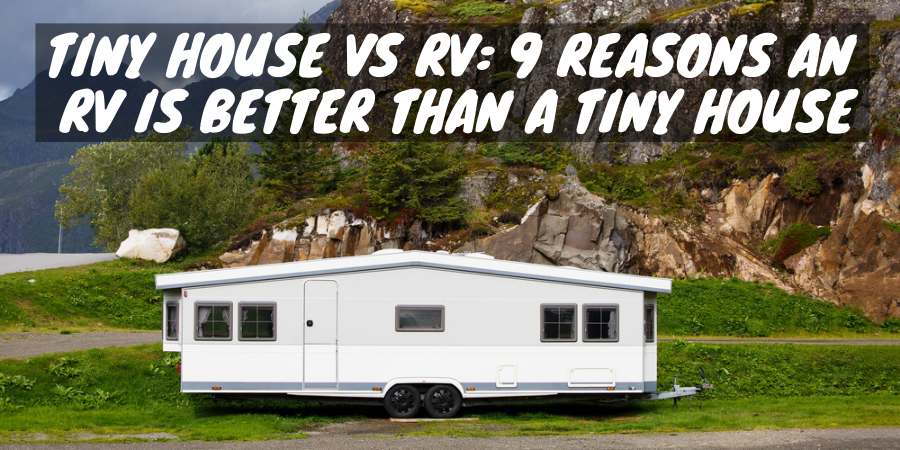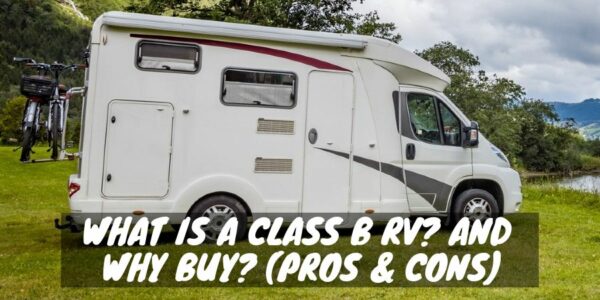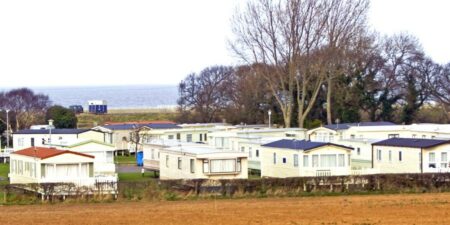Does minimalistic living sound intriguing, but you’re unsure if an RV or a tiny house is better?
Both options are a serious investment, but RVs provide immediate and long-term benefits over the tiny home lifestyle.
To help you understand what sets these two types of “homes” apart, I highlight the top nine reasons why an RV is better than a tiny house.
By reading to the end, this article can help you make the smart choice so you can enjoy the benefits of simple living.
Tiny House vs RV: 9 Reasons an RV Is Better Than a Tiny House
Downsizing your living arrangements is a great way to alleviate financial and mental strain versus living in a traditional home or apartment.
Both RVs and tiny houses are similar in the amount of living space available, and both are on a frame with wheels for easy transport.
It’s the differences between a tiny house and an RV that make a significant impact on how comfortable and functional you find your new “home.”
Before making a final RV vs. tiny home decision, check out these nine reasons that a travel trailer, motorhome, fifth-wheel, campervan, or teardrop camper may be the better option.
#1 RVs Are Available at a Lower Initial Cost
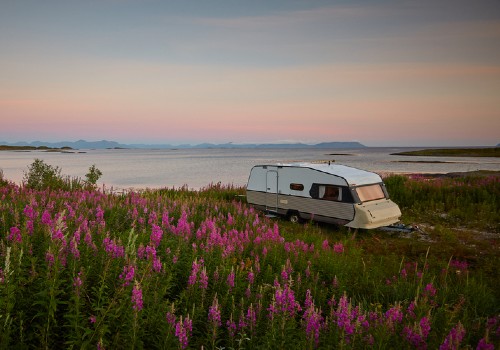
The average price for a tiny home is $45,000. Cost can rise to upwards of $200,000 depending on size, design, and location.
New RVs come in a wide price range, but many choices fall well below the $45,000 mark.
You could choose a luxury Class A motorcoach for $300,000 or more, but you can also select a super-efficient, rugged Airstream Basecamp X trailer for under $40,000 that you can take off-grid if you wish.
When you start looking at the RV resale market, you can quickly locate a spacious used travel trailer for around $10,000.
I bought my vintage Class C motorhome for $4,000, spent a few thousand on a complete interior renovation, and it’s still running strong eight years later.
RVs depreciate quickly, especially in the first two years, just like automobiles.
Many RV owners sell so they can upgrade to a different model, downsize after the kids move out, or give up camping entirely.
These two factors mean a constant inventory of affordable used RVs to buy and often leave plenty of extra cash for customization.
Tiny homes often retain or even gain value after the initial build, so it’s hard to find bargains. In locations where tiny home communities are popular, demand for completed units can push sales prices even higher.
#2 RVs Provide More Mobility and Stealth
In most US states, the maximum vehicle dimensions for road travel are 8.5 feet wide, 13.5 feet tall, and 40 feet long. Some states allow 50 feet in length, while most won’t let a tow vehicle and travel trailer combo exceed 65 feet.
Incredibly, many tiny home builders never give this information any thought before creating their masterpiece.
Trying to move a tiny home that is 9 feet wide may require special wide-load permits. Roof peaks that exceed 13.5 feet in height may not fit through underpasses or may snag on power lines.
The odd shape and extra weight of tiny homes make them challenging to tow, even with a heavy-duty truck, which is why moving them is rare.
Even though a tiny home has wheels, don’t plan to “see the country” by owning one. You’ll also find plenty of campgrounds that forbid tiny houses.
An RV adheres to vehicle-size standards, so you’ll rarely encounter issues with height clearance or road lane interference.
RVers can quickly unhook from power and sewer and move to a new location whenever the mood strikes. The ease of mobility an RV provides far surpasses even the most well-designed tiny house.
And when it comes to stealth living, both off-grid or within urban areas, trying to hide a tiny house will be next to impossible.
Many small RVs, especially Class B campervans, can park just about anywhere and not draw attention. This benefit allows you to see more areas of the country without paying for campgrounds or expensive hotel rooms.
#3 RVs Are More Comfortable and Allow For More Customization
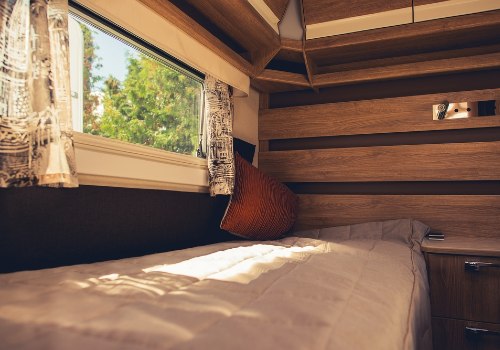
Most tiny homes and average RVs have a similar 200-300 square feet of living space, but for whatever reason, RVs feel more spacious even without a cathedral ceiling.
RVs tend to have lots of windows and an open living, kitchen, and dining area with a full-size table and couch that feels inviting. The continual change of scenery outside those windows also increases the feeling of space.
Tiny houses often utilize dual-purpose furniture to make the most of the space limitations. These features are very functional, but shifting things about frequently gets old fast.
Beds in tiny homes are nearly always in a loft, only accessible by a ladder or steep stairs. RVs typically have one bed on the main floor for quick and safe access.
Tiny home kitchens rarely offer a full complement of appliances found in an RV. Bathrooms usually have a composting toilet, whereas an RV has a flushing-style toilet.
The biggest benefit of an RV over a tiny home is the ease of making renovations.
Not only are campers very generic in design, but there are hundreds of furniture, appliance, and accessory options that are “RV ready” for easy installation.
An RV build is straightforward, so it’s easy to remove paneling to access wiring, move cabinets around, or change the flooring to suit your needs.
With a tiny home, you never know what’s under the floorboards, behind the walls, or inside false cabinets if you didn’t build it yourself.
The cost of repairs or changes within a tiny home will almost always be higher. Cutting through solid walls and floors and rearranging design elements will take more time and care to blend seamlessly and remain structurally sound.
Unless you’re the one designing a tiny home, you’ll be stuck adapting to the configuration best for the original owner and not necessarily for you.
#4 RVs Create No Hassles Around Insurance, Permits, Codes, and Registration
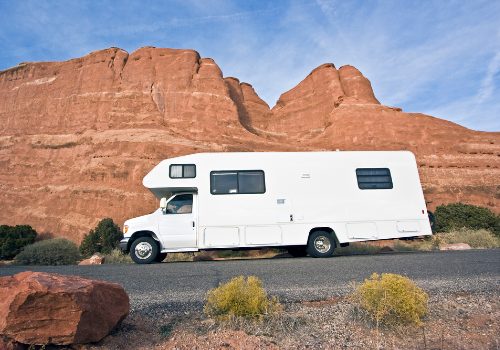
RVs are easy to register at the DMV and insure, with hundreds of companies across the US offering affordable recreational vehicle policies, even for full-time use.
States recognize RVs as a “temporary” home, so legally, there are fewer red tape issues setting up residency.
Recreational vehicles are also simple to renovate without the local building inspector sticking their nose into your business or screeching about needing permits.
Tiny homes are tricky to insure, as they don’t qualify as homes or recreational vehicles.
Most tiny houses must be permanently set on a foundation, on private land, meet building codes, and hook up to local utilities to meet insurable standards. This fact removes the ability to move the home when you wish freely.
Trying to plate your tiny home for road travel can also pose challenges now that the original trailer now holds a full structure.
Without the standard certifications and VINs that come with RVs, bringing your tiny home down to the DMV for inspection before getting a license plate may leave the staff scratching their heads about the structure’s street legality.
#5 RVs Provide Convenient Utility Options
RV manufacturers have decades of experience in camper heating and cooling. Recreational vehicles have short ceiling heights, so heat or cool air stays closer to the occupants, making you feel more comfortable.
Modern RVs have better insulation and open floorplans, so the heating or cooling moves freely around the space but remains inside.
Not only do the RV air conditioner and furnace work efficiently, but you can also enjoy the propane or 12-volt appliances or add solar panels for more power efficiency when not on shore power.
Most tiny homes have excellent insulation, but the interior design includes more walls that interfere with airflow.
Most tiny homes run only on electricity. Without the addition of propane or solar, a tiny house has no option for cooking or heating when the power goes out.
It’s more challenging to attach solar panels to tiny home exteriors attractively, and few have space for a battery bank to store power.
Cathedral ceilings are commonplace in tiny homes. During winter, heat rises out of reach of those in the main living area, but turning up the thermostat can leave the sleeping loft overly hot.
Air conditioning will keep the main floor cool in the summer, but the loft will again be warmer unless a good ventilation system circulates the air.
#6 RVs Blend in Anywhere
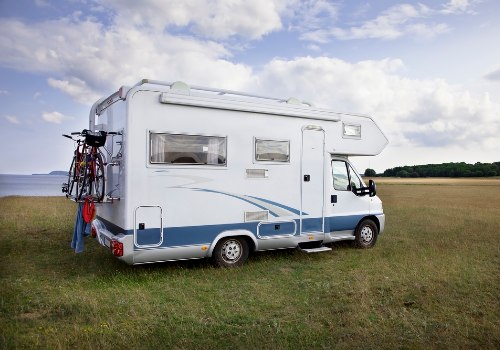
Many people who opt for the simplistic lifestyle small-space living requires also prefer to remain low-key.
RVs are everywhere, so seeing one on the road, in a campground, in a store parking lot, or even on personal property doesn’t trigger any undue attention.
RVs tend to have similar designs and color schemes, so they blend in harmoniously at campgrounds.
A tiny home looks odd when not set on a piece of land. Bring one out on the road or into a campground, and it will draw people to come to take a closer look.
Many tiny homes also sport some unusual design features or exterior colors that make them stand out even more.
Standing out from the crowd isn’t necessarily bad, but be aware that every time you move your tiny home, you’ll be getting a fresh barrage of attention and questions that can quickly become tiresome.
#7 RVs Easily Withstand Miles of Travel
No matter how you slice it, a tiny home isn’t for consistent travel down roads and highways like recreational vehicles are.
Want to Connect With a Community of Over 1,078 RV Enthusiasts?
Heck, many tiny homes aren’t even a size made to fit safely within road lanes.
I can’t imagine what it takes to pull one through a gas station or try to park one in a campground, even if I have seen a few during my years on the road.
RVs are lightweight, aerodynamic, and can withstand continual vibrations, bumps, and sways. The slick fiberglass, aluminum, or vinyl exteriors make removing road grime a breeze.
A tiny home uses wood and other standard components that are much heavier than RV materials. The outer walls are often tall and flat, with wood siding and shingle roofs.
Between the weight and the wind-catching walls, you’ll use more fuel to move a tiny house. Bumpy roads and the wind force at highway speeds lead to stress cracks and lost shingles that weaken the integrity of the tiny home’s structure every time it moves.
An RV construction is of thinner and “cheaper” materials, but they do hold up well to the rigors of travel and all types of weather with little worry you’re harming the camper’s structure.
#8 RV Financing is Straightforward
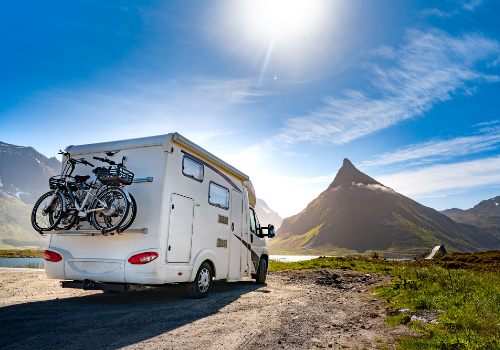
When buying a pricey recreational vehicle, there are many financing options available through RV dealerships, banks, or other lending institutions.
RV financing expands on the average 48-60 month payment terms standard for automobile purchases. Loan terms for RVs can last 10-20 years.
Spreading out the cost of an RV over many years makes it affordable for the average buyer.
Financing is readily available for both new and used RVs and is an excellent option for those who want to experience RV living but can’t afford to pay cash.
Trying to get bank financing for a new or resale tiny home is nearly impossible.
Lenders are uneasy borrowing large sums of money for a trailer-built home, as they have no control over where their collateral may end up or how legal it is to own.
Some companies that build custom tiny homes offer in-house financing, but you’ll be stuck with their repayment terms as there won’t be any competitive loan offers.
Inevitably, most tiny homeowners end up paying cash for the construction and often do most of the work themselves.
With no set rules for building code inspections or safety protocols, lenders have another reason to pass on giving out loans for tiny house builds.
#9 RV Resale Is Faster and Easier
When it comes time to change up your living arrangements, it’s much easier to sell an RV than a tiny house.
RVs come in a much wider range of price points, sizes, models, types, and designs, so they attract more buyers.
Most RV types have standard features customers can expect to find across the board, such as a full kitchen, bedroom, and bathroom, whereas not every tiny home offers the same amenities.
Interest in RVs increases by the day. With more people wanting to own a camper and are up for tackling some renovations, even older RVs or those in poor condition can find a buyer.
While tiny homes are “cool” and are in demand, the high price, design, and location of such a home may not fit the budget, taste, or convenience of a wide variety of buyers.
Moving a tiny house across the country isn’t as simple as driving an RV, so most buyers will need to be local.
In most cases, a tiny home needs a more permanent location to rest, making it harder to sell.
Finding a piece of land to legally place the unit can be difficult due to local zoning laws, which lowers the buyer pool even further.
Final Thoughts
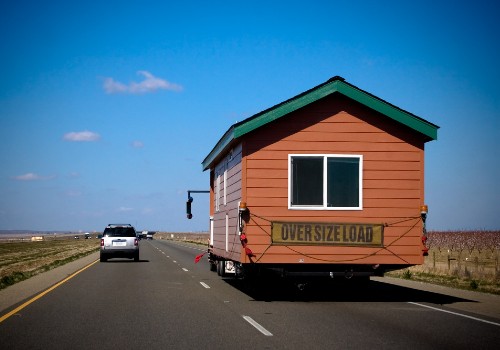
The nine reasons above are real-life comparisons of an RV vs a tiny house that you must consider if a simplified lifestyle sounds appealing to you.
As a full-time RVer with a past tiny house living experience, I believe that an RV provides much more freedom and flexibility, ideal for people who want to combine travel and work into daily life.
I hope this article clarifies the differences between tiny houses and recreational vehicles for full-time living and helps you pick the option that works best for you.
Tiny House vs RV – Which Is Better? (Video)
"Man cannot discover new oceans unless he has the courage to lose sight of the shore."
-- Andre Gide

